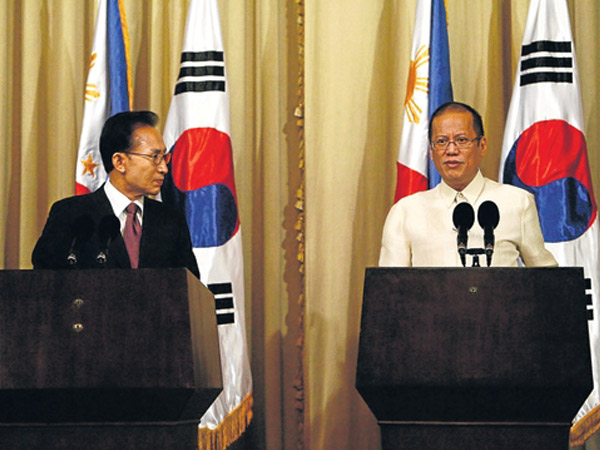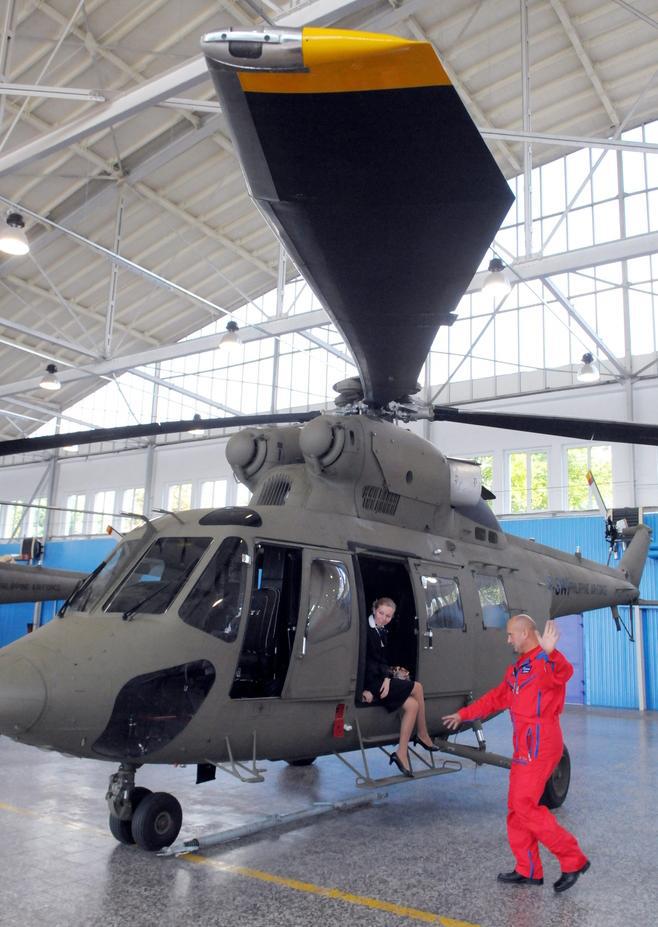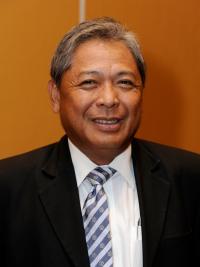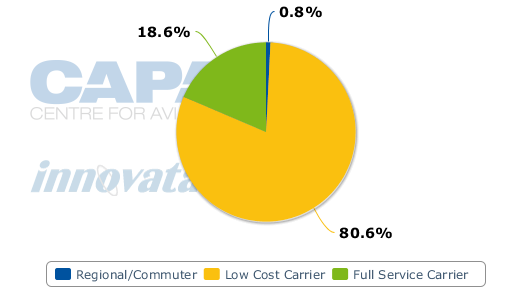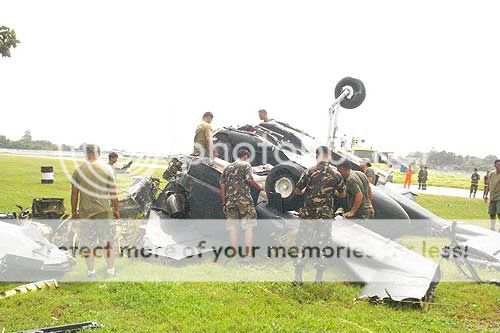The smelliest toilets, the longest queues, the
rudest staff ... sometimes air rage feels justified
By Jordan Rane
Manila fairly lands Five
November 9, 2011
There’s a special form of loathing reserved for a building that
forces you to remove your shoes, wait in line, get groped, shell out for
bad food and dash in a panic to an arbitrarily changed gate before
canceling your flight.
But let’s be clear. The most hated airports in the world are not the worst airports in the world.
For
that you’ll have to consult Lonely Planet or fly to destinations the
majority of us have little need to pin on a map or pronounce properly.
What
follow are 10 majorly despised international hubs (or hopefuls) that,
while they may have a few staunch fans, and some have even won awards,
have all inspired enough fury, flak and “never again” air-rage to merit a
place on this list.
10. São Paulo-Guarulhos International, São Paulo, Brazil

Whether it's 9 a.m. or 9 p.m. this airport experiences round-the-clock rush hour.
Why is this place on our list after scoring third best airport in South America at the 2011
World Airport Awards?
Because,
shockingly enough, it turns out that corporate medal ceremonies aren’t
always in sync with what people are thinking when they're standing in
two-hour immigration lines, suffering routinely unannounced gate changes
and paying through the teeth for a stale Brazilian cheese roll and beer
inside an understaffed and over-aged aviation facility.
In a
country where flight delays (departing or arriving) are just part of the
deal, some recent numbers would give pause to the most unflappable
traveler at Brazil’s largest airport.
Just 41 percent of all flights leave on time. Only 59 percent of flights arrive on schedule, according to
Forbes.
São
Paulo-Guarulhos has announced plans to add runways and terminals --
what airport hasn’t? -- but with nearly 30 million passengers traipsing
through every year (the figure has reportedly doubled in under a decade)
the urgency is palpable and, sadly enough, unsolved by upping prices at
musty duty-free shops.
But does this really constitute bronze
medal status? When the best unofficial advice for surviving Brazil’s
pin-up airport is to try and learn a little Portuguese and not lose your
temper, something’s gotta give.
9. Perth Airport, Perth, Australia

Kick a dog while it's down: The Qantas strike didn't help PER's reputation.
If there’s one thing Australians love, it’s hating their airports. But
while the big guns in Sydney, Melbourne and also-rans in Darwin, Cairns
and Hobart get routinely lambasted for various inefficiencies and
rip-off tactics, passengers in Western Australia have a special place in
their spleens for Perth.
“The only advantage over some other airports is the lack of nearby combat,” notes one of several miffed passengers on
airportquality.com.
With
a reviled pair of domestic terminals (home of two-hour taxi-line
queues, atrocious check-in lines, overpopulated gates and meager
lounges) and a slightly more palatable international terminal five
kilometers away, Perth’s brittle facilities can be overwhelmed just by a
trio of aircraft arriving within 20 minutes of each other.
Now
that an ambitious “billion-dollar” redevelopment project has been
significantly scaled back, who would ever want to leave Changi for this
place?
8. Tribhuvan International, Kathmandu, Nepal

Don't look the officers -- or the dogs -- in the eye.
For
a small airport in a pretty country, Tribhuvan has it all: the
interminable weather delays of Boston Logan, the shoddy restroom
maintenance of a Glasgow sports bar, the departure board sparsity of
McMurdo Airfield and the chronic chaos of a kids' soccer match.
Some
airport improvements have been underway for the Visit Nepal 2011
tourism campaign, including things most passengers don’t much care about
(e.g., the new helicopter base).
The most serious beefs with
Nepal’s only international airport revolve around its primitive yet
officious check-in procedure, starring a roulette wheel of underpaid
security agents.
“Departure is an endless game of body searches and silly questions,” notes one
passenger.
“Those
who didn’t have their e-tickets printed out had to argue their way in,”
says another, who was checked seven times and scolded for not having a
baggage tag on a carry-on before eventually boarding.
Never mind. The city’s markets and surrounding mountains are lovely.
7. John F. Kennedy International, New York, United States

Fans flooded the airport to welcome the 1964 British Invasion, but it seems they never left.
You’d
think it would be one of the greatest humiliations any major airport
would never allow itself to live down -- getting routinely abandoned by
fed-up folks opting to fly out of Newark (Newark!) instead, where at
least the ground staff cop less attitude and fewer people outside are
pretending to be cab drivers.
But, nah, JFK really couldn’t really care less.
Every
year, more than 21 million passengers stumble through worn, mid-century
terminals that peaked when The Beatles arrived in the United States and
rooftop parking was all the rage; JFK proudly remains the world’s
busiest international air gateway.
So if you’re not into a dim,
surly, unbearably congested airport reeking with attitude and
unapologetically long immigration lines -- good riddance.
“JFK had a piece of my luggage sitting in a little detention room for bags -- for over a year,” notes
one passenger.
“No one noticed it was there, until finally an observant Air France
employee wondered what the dusty little green bag in the corner was.”
6. Jomo Kenyatta International, Nairobi, Kenya

Can't be disappointed if you're not expecting much.
“As African airports go, it’s not that bad -- but as an international hub, it may be one of the worst out there.”
This
is the common refrain among travelers through JKIA, who either don’t
have the heart or the expectations to give this dated aviation facility
the kind of pounding reserved for the JFKs and Charles de Gaulles of the
world.
Saddled with a 1958 blueprint designed for 2.5 million
passengers, JKIA receives close to twice that many. Hence the airport’s
2005, Three Phase, US$100 million expansion project which has seen long
delays (something about the rain) and has been spinning its tires
somewhere in Phase Two for the last few years.
For now, that
means business as usual: cramped spaces; long lines; inadequate seating;
frequent power outages; tiny washrooms hiding up several flights of
stairs; shabby duty free shops; overpriced food outlets; and business
class lounges worthy of a shelter in mid-city Los Angeles.
Sure, it’s a breeze compared to Lagos. But it could be so much better. The confusing result: grateful disappointment?
5. Ninoy Aquino International, Manila, Philippines

Wear a helmet -- the first collapsed ceiling in 2006 at Ninoy Aquino International Airport.
Beleaguered
by ground crew strikes, unkempt conditions, soup kitchen-style lines
that feed into more lines and an overall sense of futility, NAIA brings
the term “Stuck in the 1970s” to a new level.
At Terminal 1 all
non-Philippine Airlines remain crammed despite serious overcapacity
issues and a new and underused Terminal 3 is occupied by a few minor
carriers.
A rash of bad press this year (including a “Worst in
the World” ribbon from Sleeping in Airports) was capped by a collapsed
ceiling in T1, a paralyzing ground service strike at T2, and the usual
charges of tampered luggage, filthy restrooms, seat shortages at gates,
re-sealed water bottles sold in retail shops and an Amazing Race-style
check-in routine spiked with bureaucracy, broken escalators, lengthy Dot
Matrix passenger lists and creative airport departure fees.
4. Toncontín International, Tegucigalpa, Honduras

Over-priced corn chips will be the least of your worries.
When
do the most common airport gripes about inefficiency, uncomfortable
gate chairs, dirty floors and lousy dining options suddenly become
irrelevant? When you’re preoccupied about whether your 757 will actually
be able to stop before the runway does.
Nestled in a
bowl-shaped valley at 957 meters above sea level, Toncontín’s
notoriously stubby, mountain-cloaked landing strip was recently
lengthened another 300 meters following a fatal TACA aircraft overshoot
in 2008.
Not enough though to avoid being named the “second most dangerous airport in the world” by the History Channel.
Nepal’s
hair-raising Tenzing-Hillary Airport in the Himalayas is the top seed,
but receives fewer gripes from its thrill-seeking Everest-bound
clientele.
3. London Heathrow, London, England

"You'll fly through departures -- at the speed of a penguin."
Depending
on which of Heathrow’s five terminals one is funneled through, the
average experience at the world’s third-busiest airport ranges from
mildly tedious to "Fawlty Towers" ridiculous.
With its rash of
-- as they were politely called -- “teething problems” in bright and
airy T5 (remember that riotous grand opening with 34 canceled flights?)
and nicely matured problems in Ts 1, 2 and 3, the issues passengers are
beset with run the gamut.
Parking messes. Busted baggage
carousels. Deadlocked security lines. Long walks (or, more commonly,
runs) between gates to a frenzied soundtrack of “last call”
announcements. Realizations that getting out of Heathrow took longer
than actually flying here from Madrid.
In the airport “where the
world changes planes,” it all boils down to a chronic inability to cope
with this many people. Plans for a sixth terminal should help sever even
more nerves.
2. Los Angeles International Airport, Los Angeles, United States

It's not even a good spot for celebrity sightings.
If
the world’s seventh-busiest flight hub was an old ballpark resting on
the stale reputation of its Dodger Dogs and that great 1959 series, LAX
might have some endearment value.
But it’s an airport -- a
dramatically undersized and moribund one with the architectural élan of a
1960s correctional facility and several publicized concerns about how
its 1,700 takeoffs and landings a day can be sustained in a facility a
fifth the size of healthier cousins like Dallas/Fort Worth.
The
unsupportive donut-shaped design -- it’s been called “eight terminals
connected by a traffic jam” -- makes dashing between airlines feel like a
diesel-scented cardio test.
Plunked in the middle is the
airport’s landmark Jetsons-style restaurant and only mentionable
amenity, Encounter, but how does one actually get inside this place --
at least before being nailed for a petty traffic violation by some of
the most ticket-hungry airport cops west of the Mississippi?
1. Paris-Charles de Gaulle, Paris, France

Don't expect to make friends during a storm closure.
“A great country worthy of the name,” President Charles de Gaulle once opined, “does not have any friends.”
True or not, it’s this sort of attitude that has helped CDG become the most maligned major airport on earth. What’s fueling it?
Grimy
washrooms with missing toilet seats don’t help. Nor do broken scanning
machines and an overall lack of signage, gate information screens and
Paris-worthy bars, restaurants or cafés.
The baffling circular
layout is worsened by warrens of tunnel-like structures, dismissive
staff and seething travelers waiting forever in the wrong queue.
The worst part may be this airport’s aura of indifference to it all. “Waiting for a connection here,” notes one
commuter, “is like being in custody.”
If
you’re actually staying in Paris, you may be okay. If you have the gall
to just be passing through between Malaga and Montreal, you can cut the
spite of this place with a cheese knife.




